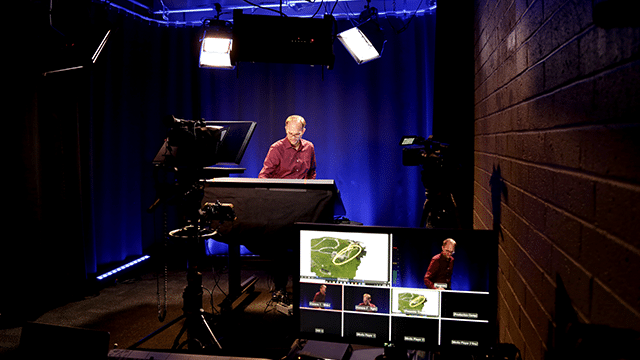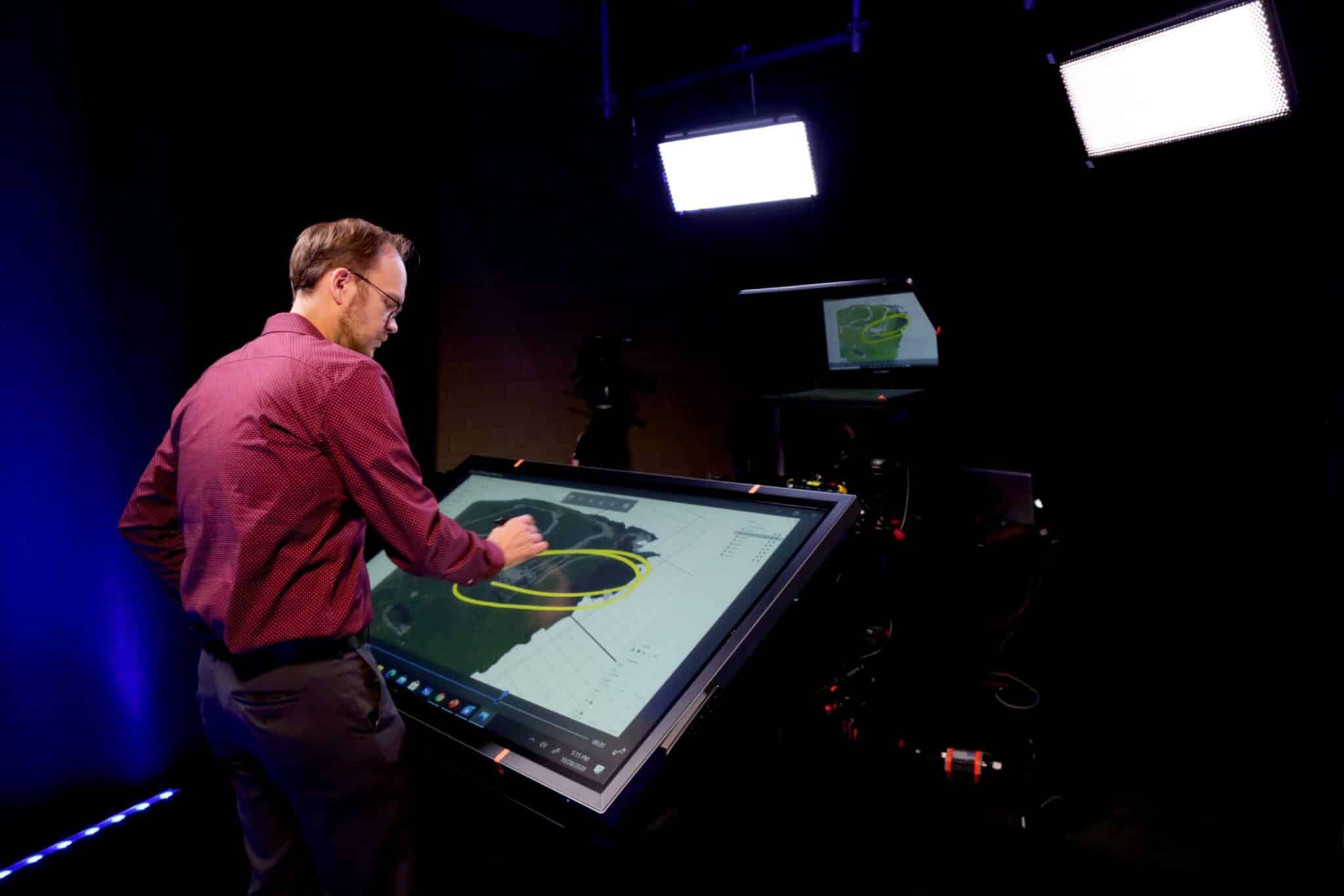Biola University’s Digital Learning and Program Development is tasked with the creation and design of online and hybrid learning programs. With gradual investments in production and post-production technology, consulting with Key Code Media, and hiring the right staff- the department has grown from producing only one course every 3 months to delivering about 2,500 videos per year with a current catalog of over 10,000 videos, and they have recently added capacity to possibly double their output.
We recently interviewed Joseph Rubio, Director of Educational Video & Innovation for Biola University’s Digital Learning and Program Development to pick his brain on how Biola successfully built its department, production studio, and online program- and how it is performing now during COVID.
It all began with an AV cart and a Sony camcorder
In the beginning, the process was simple for the Biola Digital Learning team. The team would send an AV cart with a Sony camcorder into a classroom and record a lecture. The audio quality was poor at first- capturing every student’s pen-drop or cough. The camera had exposure issues, trying to capture both a projected slide deck and the professor lecturing in a poorly lit shot.
“Using our original set up, it would take 14 weeks to capture 1-course. Then another 12-18 months to edit. Students would need to be blurred or cropped out. Presentation slides were often badly designed, plus, some of the people recording the lecture often did not have a lot of production experience, so the quality of capture was mixed to say the least.”
– Joseph Rubio, Biola University
When Joseph Rubio joined Biola University, he was tasked with creating online educational video content that would meet a higher standard. Swapping out the long 1-2 hour lecture recordings, with shorter 10-minute digestible videos he likes to call “short-form lectures.” He also was tasked with building out a studio space for capture and a better process for editing and delivering content to their Learning Management System (LMS), Canvas.

Building A Video Studio Workflow For Online & Hybrid Courses At Biola
Most lecture recordings are now short 10-minute chunks, filmed in 1-of-3 studio spaces. The main studio has two Panasonic CX350 cameras for capture, a Prompter People Teleprompter, wireless Shure mics, and not only an LED-illuminated transparent whiteboard–often called a “lightboard”–– but also a Dell 55” inch Touchscreen tablet for educators to use during their lecture.
The team jumps between a Blackmagic ATEM 4K Studio and a Newtek TriCaster Mini- purchased from Key Code Media- for record and line mix, depending on the scope of the recording.
“For every 1 hour of classroom recording, it previously took us 8-10 hours of editing. The Digital Learning Video team dropped it down by half to 4-to-1 or less with turning around content with the new studio workflow. We can produce anywhere from 3,500-5,000 videos per year now.”
– Joseph Rubio, Biola University
More Media, More Problems. Enter IPV Curator For Better Media Management
Once the studio was built, the amount of content was booming. The Biola team found themselves recording about 20-30 lectures per day, 5 days per week. Managing and creating an editing pipeline suddenly became a major priority for their three on-staff editors, and three student editors.
“As video exploded, we started to realize we didn’t have a good way to track our inventory of content. We stumbled upon Key Code Media’s YouTube channel when researching solutions and decided to give their team a call- I’m glad we did! Partnering with Key Code Media became a place for us to bounce ideas about our media workflow, get real-world advice, based on their past experiences with big blockbuster productions, and high-profile video influencers. That knowledge and experience helped me personally grasp how we approached the expansion of our workflow.”
– Joseph Rubio, Biola University
After a period of discovery, The Biola team ended up adopting IPV Curator for better Adobe team collaboration, archive, proxy-based workflows and media management. The team is leveraging 3 IPV servers, with a Tier 1 Avid NEXIS for a fast editing proxy workflow, and HP storage for Tier 2. StorageDNA is used to manage moving project files from Tier 1, Tier 2, to Archive.
“IPV Curator was a game changer for our team. We can now search and use clips, projects, and files from our massive library within a Premiere Pro timeline. Our team has the ability to collaborate on Premiere Pro projects, accessing files in the office or remotely, from anywhere.”
– Joseph Rubio, Biola University
A New Remote World For Education
The traditional pre-COVID pandemic workflow for Biola was relatively straightforward. The team would shoot in the studio, post-production would edit using their IPV Curator connected network, completed videos were uploaded to VidGrid, and published to online courses in Canvas. That all changed with COVID.
“Going remote because of COVID meant the demand for video production skyrocketed! Often times our instructors are uploading files directly to us from home. Our post-production team is scattered across various locations. And, while we do have some people still in the office, we’re now depending on the IPV Curator to collaborate on projects from anywhere.”
– Joseph Rubio, Biola University
Summary of Key Code Media Installations
Biola University worked with Key Code Media to develop a more efficient capture-edit-deliver workflow for the Digital Learning and Program Development team. The solution included Avid NEXIS storage for fast edit proxy workflows, IPV Curator for media management and collaboration on Adobe Premiere Pro projects, and DNA Evolution for LTO archive.
When the pandemic hit, the IPV Curator allowed the dispersed production team to continue collaborating and delivering video projects, in a time when demand for video was at its highest.
“Before working with Key Code Media, we had spoken with a few of their competitors. While they were good at taking specifications on paper and designing standard server configurations- that was it. Key Code Media took a different approach with us, providing a high-touch experience to make sure even after the equipment is installed, that it is working properly, and our team can successfully use it. It’s been a huge differentiator for us.”
– Joseph Rubio, Biola University


